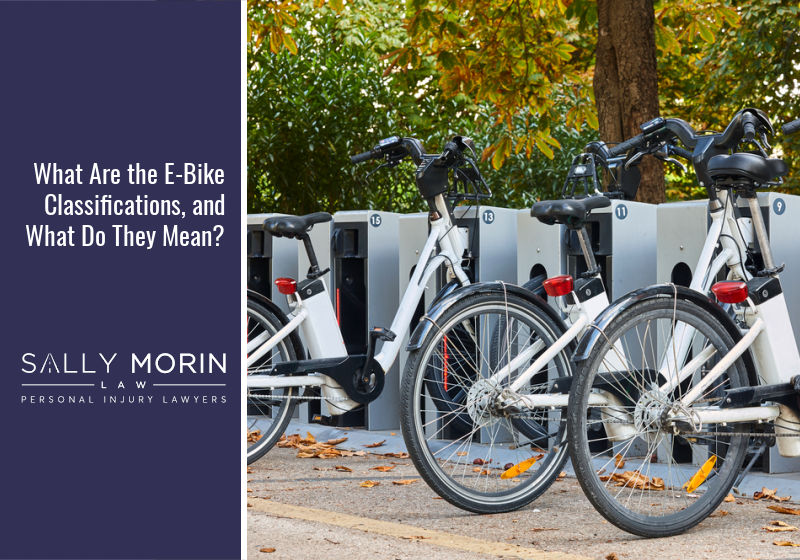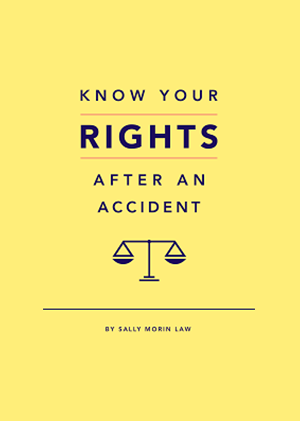What Are the E-Bike Classifications, and What Do They Mean?
Please be advised that the following topic is for informational purposes only and not a legal matter currently handled by our firm. If you need further assistance regarding this particular topic, you can contact your local Bar Association for a referral to an attorney who may be able to address your inquiry in more detail.
In today’s digital world, there are constantly new advances making our lives easier and more efficient—and the vehicle and transportation industry is no exception. Electric cars, for example, have been available for years now, providing drivers with better safety measures and helping them save on fuel and protect the environment.
But what about electric bikes or e-bikes? E-bikes have also technically been around for several years now, but they have only recently started to gain in popularity as bicycle commuting becomes more and more common. A bicycle, however, is not a car. Yet, with the emergence of e-bikes, there is a bit of confusion about how we should treat electric bikes regarding traffic laws.
Is it still just a bicycle? Is it a motor vehicle? What happens if you get into an accident with an e-bike?
As bicycle advocates ourselves here at Sally Morin, we thought we’d answer these questions to help clear up any confusion. With bicycle commuting growing in popularity, especially here in California, it’s important to understand traffic laws concerning bikes and vehicles to keep you and your loved ones safe.
And if you ever have any questions or concerns about California e-bike accidents, we’re here to help!
What Is An E-Bike?
So, what is an e-bike exactly?
As the name implies, an e-bike—or electric bike—is a bicycle that is equipped with an electric motor. The purpose of this is to assist riders with pedaling, which comes in handy for those who like to bike long distances, carry cargo on their bike, or use cycling as their main form of transportation.
While cyclists have always had to obey traffic laws according to vehicle code, the addition of an electric motor means a bike can now be classified as a two-wheel vehicle, similar to a motorcycle or a moped. This means there are some different rules that apply.
However, not all e-bikes are the same, and the laws can vary depending on the specific e-bike classifications.
Understanding E-Bike Classifications
According to the California DMV, an e-bike is a bicycle with fully operable petals that is equipped with an electric motor of fewer than 750 watts. There are three California e-bike classifications:
- Class 1 e-bike: This is a low-speed pedal-assisted bicycle. With this type of e-bike, the motor only kicks in to assist while you are pedaling below 20 mph. Once 20 mph is reached, the motor stops assisting.
- Class 2 e-bike: This is a low-speed throttle-assisted bicycle. With this type of e-bike, the electric throttle boosts or propels the bike into motion without the need for pedaling, but it does not assist past 20 mph.
- Class 3 e-bike: This is a regular speed pedal-assisted bicycle. With this class of e-bike, a speedometer is included, and the motor kicks in to assist the rider while they are pedaling up to 28 mph. Assistance stops once 28 mph is reached.
E-bikes can also come with something called a hall sensor or hall effect sensor. But what is a hall sensor on an e-bike, and why does it matter?
A hall sensor is a magnetic sensor that can detect the presence of a magnetic field. With e-bikes or other motor vehicles, this can be used to sense proximity, position, and speed, all of which are important for keeping the operator safe and aware.
California Laws for Electric Bikes
E-bike riders are subject to the same rules and laws as traditional bikes, such as following speed limits, traffic laws, obeying signs, etc. However, the class distinction of an e-bike is important as it can change what specific laws apply.
Class 1 and 2 electric bikes, for example, are generally allowed wherever traditional bikes are allowed, unless there is a sign prohibiting electric bikes. Class 3 e-bikes, however, cannot use trails, bike paths, or bike lanes unless specifically allowed by local ordinances.
Riders of a class 3 e-bike must also be at least 16 years of age and wearing a helmet, and they may not transport passengers.
E-Bike Accidents Are Becoming More Common
As e-bikes gain in popularity, this means the risk of an e-bike accident increases as well. However, it is not necessarily car drivers that are to blame for accidents. E-bike operators as well can carry the blame or share in liability if they do not obey traffic laws according to their e-bike classification.
In most cases, cars and e-bikes must share the road and abide by all traffic laws unless a specific exception is stated. This means stopping at traffic lights and stop signs and yielding right-of-way accordingly.
Unfortunately, car drivers often dislike sharing the road with cyclists and might not yield the right-of-way or pass them safely as they are supposed to. Cyclists, in general, are also often ignored or not seen as easily as larger motor vehicles. Thus accidents involving cyclists, including e-bike operators, happen quite often and can result in serious damage and injuries.
What to Do if You’re Involved In An E-Bike Accident
If you are hit by a car as an e-bike operator or if you are the driver that was involved in an accident with an e-bike, you should consult with a local California e-bike injury attorney. While car drivers are often the ones found negligent in bicycle accidents, it is possible for the e-bike operator to have disobeyed the traffic laws as well.
Unfortunately, as e-bike laws are still so new, handling an accident claim, whether you are the e-bike operator or the vehicle driver, can be tricky. While there are state laws in California in place concerning e-bikes, the law can vary depending on where exactly the accident occurred and what specifically happened.
A local attorney with experience handling e-bike cases can help you navigate your claim and ensure the right party is held accountable. Furthermore, they can help you get a larger settlement amount that fully compensates you for your accident damages so you can recover and move on as comfortably as possible.
We Handle Your Accident Claim So You Can Focus On Your Life
At Sally Morin, we truly care about the people of California. We handle many areas of the law, including e-bike accidents, and know what it takes to ensure our clients walk away with the settlement they deserve.
Call us at 877-380-8852 or contact us online today for a free case evaluation.











